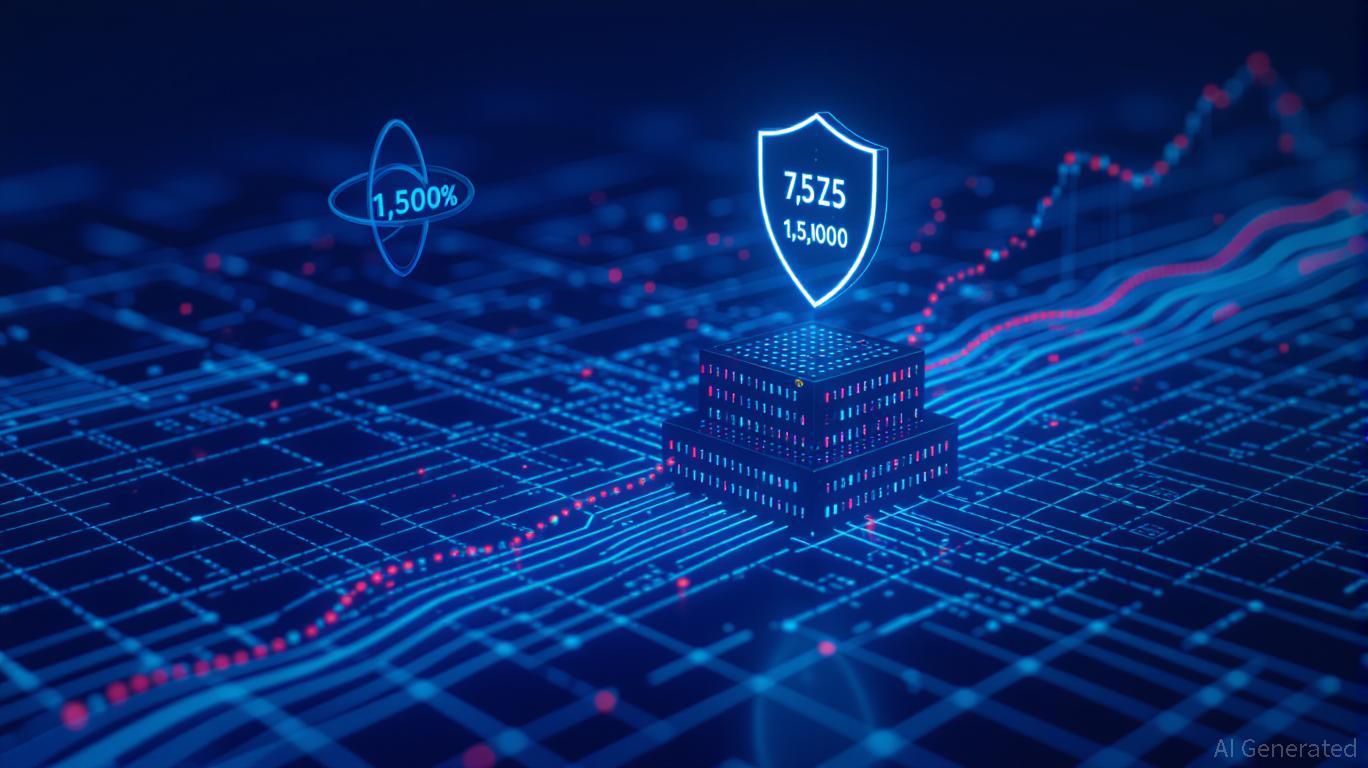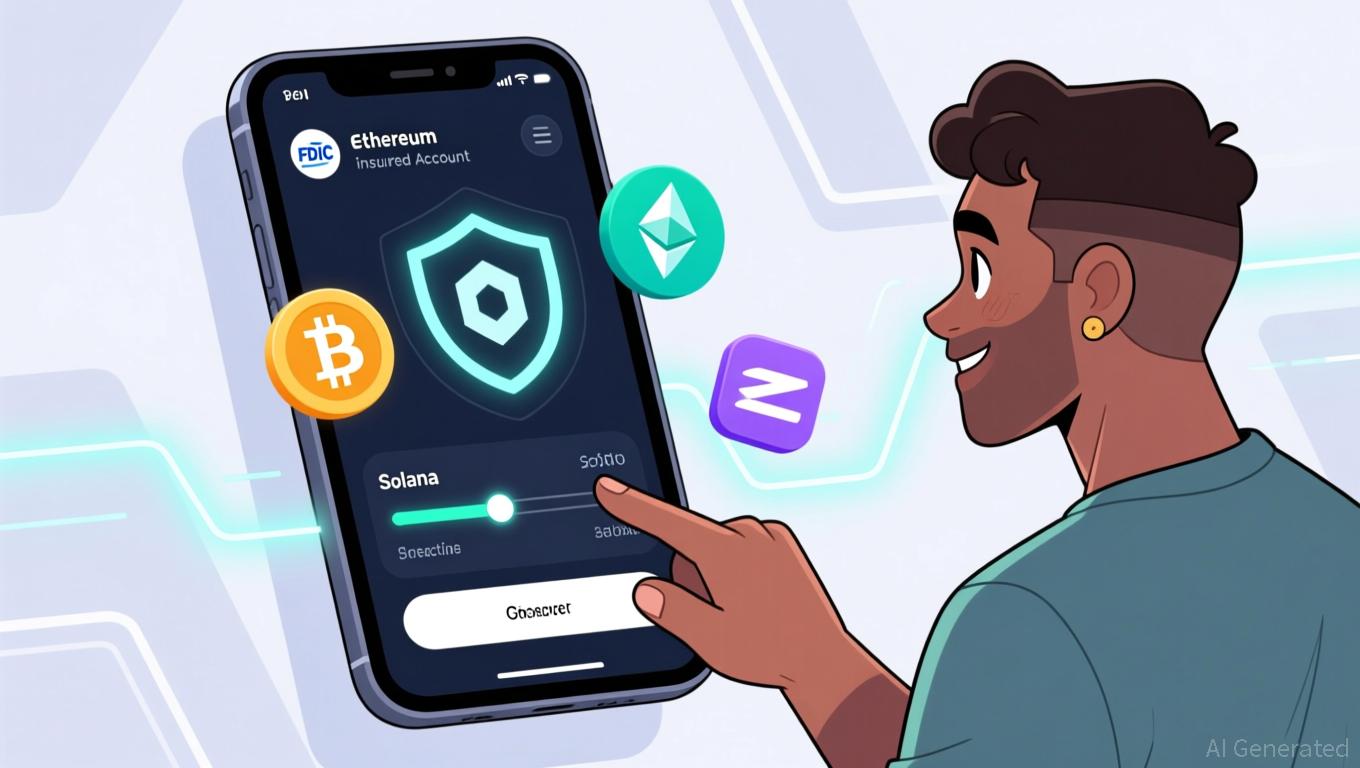Vitalik Buterin's Latest Advances in ZK Technology and Their Impact on the Market
- Vitalik Buterin's GKR protocol reduces ZK verification costs by 10-15x, enabling ZKsync to achieve 15,000 TPS with near-zero fees. - Ethereum's modexp precompile replacement addresses a 50x scalability bottleneck, aligning with its "Lean Ethereum" efficiency goals. - ZK-based platforms like ZKsync (ZKS +150% in 2025) attract Citibank/Deutsche Bank, while Starknet/Immutable expand ZK into DeFi and gaming. - Institutional adoption highlights ZK's viability for enterprise use, though quantum computing risks
A Major Step Forward: The GKR Protocol
The GKR protocol introduced by Vitalik is nothing short of revolutionary. It dramatically reduces verification expenses and hardware needs—by as much as 15 times in theory and 10 times in real-world scenarios. This leap is transforming
This progress isn’t just about speed. Lower computational requirements make ZK-powered networks more energy-efficient and, importantly, better protected against quantum threats, as mentioned in a

Addressing the Modexp Precompile and Ethereum’s Streamlined Vision
Vitalik’s efforts don’t end there. He’s also addressing a less obvious obstacle: the modexp precompile, a legacy component for RSA encryption that now slows ZK-EVM proofs by a factor of 50, according to the Bitget report. By substituting this with standard EVM code,
What does this mean? While some DeFi protocols may experience short-term fluctuations, the long-term outlook for the network is positive. It’s similar to a crucial “software update” for Ethereum’s infrastructure—one that could establish ZK-EVM as the benchmark for enterprise use.
Market Impact: ZKsync’s Growth and Institutional Interest
The results speak for themselves. ZKsync’s native token, ZKS, jumped 150% in November 2025 after the Atlas upgrade, which cut gas fees and drew in major institutions like Citibank and Deutsche Bank, as reported by Bitget. At the same time,
For those investing, the message is clear: ZK-based platforms have moved beyond speculation. They are addressing tangible issues—such as high transaction costs, slow processing, and regulatory challenges—and are attracting both retail and institutional capital.
Balancing Opportunity and Risk in the ZK Sector
However, every breakthrough comes with its own set of risks. Ethereum’s modexp challenge and the need for widespread GKR implementation point to ongoing technical obstacles, as the Bitget report notes. Regulatory concerns over privacy coins like
Still, these issues can be overcome. Investors should prioritize projects with practical applications and strong institutional support. ZKsync, Starknet, and Immutable are prime examples. For those with a higher risk appetite, investing in Ethereum itself—now a core platform for ZK innovation—may be a compelling option.
Final Thoughts: The Dawn of a New Blockchain Investment Era
Vitalik Buterin’s work with ZK technology represents more than just an upgrade—it marks a fundamental shift. As these solutions mature, we’re likely to see a split in the blockchain sector: older networks struggling to keep pace, while ZK-driven platforms lead in scalability and DeFi.
Right now, the takeaway is unmistakable: This is the moment to embrace ZK-based platforms. Whether through tokens like ZKS, Ethereum itself, or DeFi projects built on these foundations, the potential is enormous. But as always, proceed with care. The journey toward quantum-resistant, highly scalable blockchains is ongoing—and the most successful investors will be those who approach it with both foresight and caution.
Disclaimer: The content of this article solely reflects the author's opinion and does not represent the platform in any capacity. This article is not intended to serve as a reference for making investment decisions.
You may also like
Bitcoin News Update: Traditional Banks Struggle to Compete with SoFi's All-in-One Crypto Expansion
- SoFi becomes first U.S. bank to launch integrated crypto trading via its app, offering BTC, ETH, and SOL. - The service uses in-house infrastructure and regulatory compliance, replacing a 2019 Coinbase partnership (suspended in 2023). - Enabled by March 2025 OCC guidance, it aims to attract risk-conscious users with FDIC-insured accounts and a Bitcoin giveaway promotion. - Future plans include a USD-backed stablecoin by 2026 and blockchain remittances, though crypto remains speculative and uninsured.

XRP News Today: XRP Faces Technical Challenges While Ripple Grows Its Institutional Presence
- XRP's price has fallen below $2.40 amid a "death cross" technical signal and weak RSI, with key resistance at $2.50–$2.60. - On-chain data shows 240% higher profit-taking by long-term holders, with $470M in realized losses as prices drop below $2.50. - Ripple secures $500M funding at $79B valuation but XRP remains detached from institutional progress, down 20% in Q4 2025. - Whale activity declines sharply while retail sentiment wanes, with trading forum engagement down 25% month-over-month. - XRP trades

JPMorgan's Advantage with Deposit Tokens: Institutional Options Beyond Stablecoins
- JPMorgan launches JPM Coin, a 24/7 USD deposit token for institutional clients via Coinbase's Base blockchain, enabling real-time settlements beyond banking hours. - The token, piloted with Mastercard and B2C2, aims to streamline cross-border payments and will expand to non-institutional clients and euro-denominated JPME pending approvals. - JPM Coin serves as collateral on Coinbase and differentiates from stablecoins by representing tokenized bank deposits with potential yield-bearing features. - The in
Bitcoin Updates: Major Whale Moves $10 Million—Is This a Market Dump or a Tactical Shift in Holdings?
- A Bitcoin whale withdrew 100 BTC ($10.32M) from Binance, signaling renewed activity from long-term holders amid broader "OG" whale selling trends. - Over 1,000 BTC/hour has been dumped by seven-year+ holders since November 2024, with $100M+ sell-offs highlighted by Capriole's Edwards as "persistent distribution." - Technical analysis forecasts a $89,600 price drop via bear pennant patterns, compounding risks as Bitcoin trades 18.7% below its $126K all-time high. - Whale activity remains ambiguous: withdr
